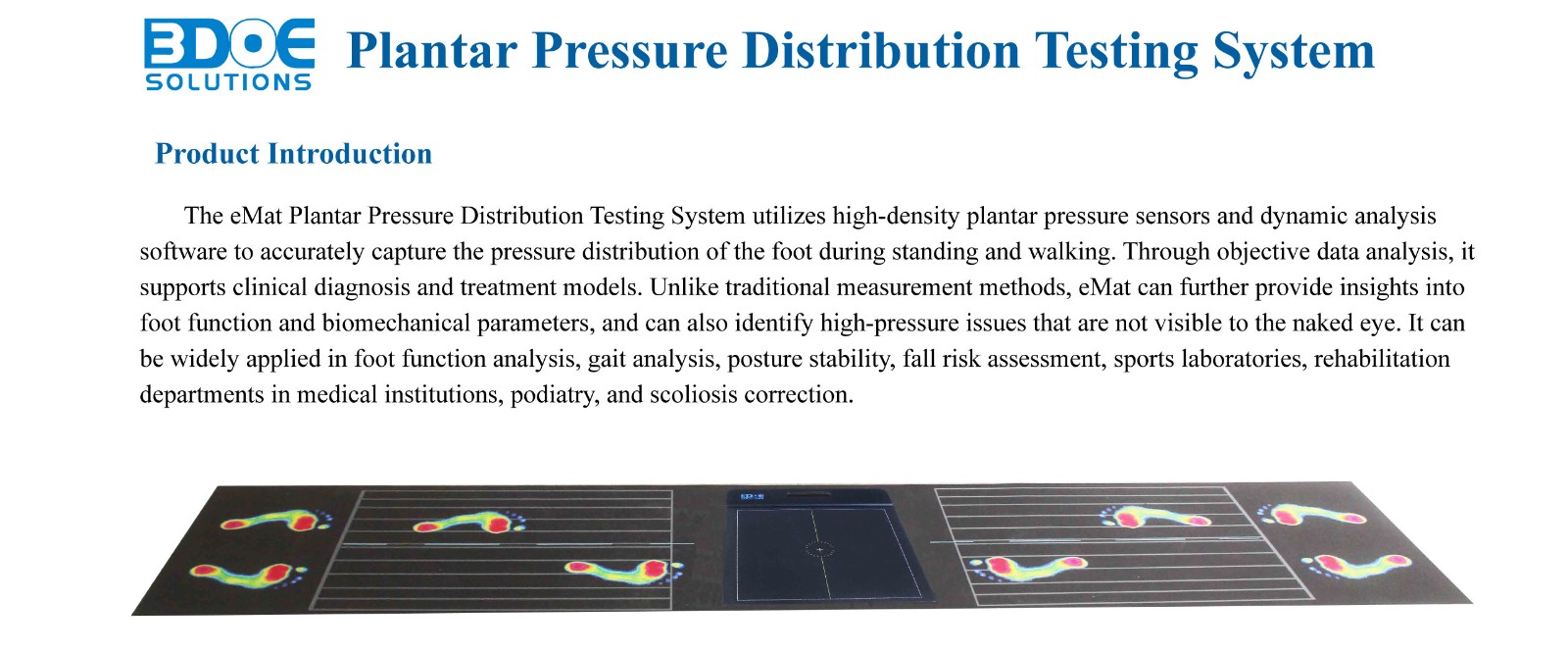In today's pursuit of health and physical fitness, more and more fitness enthusiasts are realizing that scientific training is more important than "brute-force" exercise.
As the only point of contact between the human body and the ground, the foot bears the full impact of actions such as standing, walking, running, and jumping. If plantar pressure is uneven or gait is abnormal, not only will training efficiency be affected, but chronic injuries such as plantar fasciitis, knee pain, and hip discomfort may also occur.
Plantar pressure analysis technology, originally used primarily in sports medicine and professional sports science research, has gradually entered the public eye. Through smart devices and data analysis, it helps ordinary people achieve safer and more effective fitness goals.
Understand Your Own Foot Type to Avoid "Blind Training"
Many fitness enthusiasts are unaware of their arch type (e.g., flat feet, high arches) or whether they have issues such as in-toeing or out-toeing, leading them to choose unsuitable forms of exercise or running shoes. A professional plantar pressure test can clearly show:
Whether pressure is concentrated in the forefoot, heel, or medial/lateral side;
Whether excessive pronation or supination occurs during gait;
Whether the loading on the left and right feet is symmetrical.
This information helps determine suitable types of exercise. For example, individuals with flat feet should avoid prolonged high-intensity jumping exercises and instead prioritize low-impact activities such as swimming or using an elliptical machine; those with high arches should pay attention to selecting cushioned running shoes.
Optimize Running Form to Prevent Sports Injuries
Running is one of the most common forms of fitness, but incorrect foot-strike patterns are a major cause of injury. Combining a plantar pressure distribution system with video analysis can identify:
Whether "heel strike" (landing on the heel first) occurs, accompanied by high impact peaks;
Whether arch support is insufficient, leading to excessive medial pressure;
Whether toes generate uneven force during the propulsion phase.
Based on the analysis results, running form can be gradually improved by adjusting step rate, shortening stride length, and strengthening core and lower limb muscles, thereby reducing the risk of injury.
Guide Personalized Footwear Selection
There are numerous types of fitness and running shoes available on the market, but "what suits others may not suit you." A plantar pressure map can visually indicate which type you need:
Stability shoes: suitable for individuals with collapsed arches or excessive inward rotation;
Cushioned shoes: suitable for those with high arches and obvious outward rotation;
Custom insoles: for localized high-pressure areas (e.g., metatarsalgia), custom pressure-relief pads can be made.
This helps avoid compensatory knee or lower back pain caused by wearing inappropriate footwear.
Improve Stability in Strength Training
Compound movements such as squats, deadlifts, and jumps place extremely high demands on foot stability. Plantar pressure analysis can reveal:
Whether body weight is shifted off-center while standing;
Whether pressure is evenly distributed between both feet during a squat;
Whether compensation occurs during single-leg movements (e.g., lunges).
Based on this information, proprioception training (e.g., balance pad exercises) can be enhanced and force generation patterns corrected to improve movement quality and safety.
Monitor Rehabilitation Progress and Training Adaptation
For fitness enthusiasts who have experienced ankle sprains, plantar fasciitis, or post-surgical recovery, regular plantar pressure testing can objectively assess:
Whether function in the injured limb has recovered;
Whether pressure distribution has improved after training;
Whether new imbalances have emerged.
This enables data-driven, progressive return-to-training programs.

 +86-0755-86131192
+86-0755-86131192 2025-09-11
2025-09-11 Back to list
Back to list








 +86-0755-86131192
+86-0755-86131192